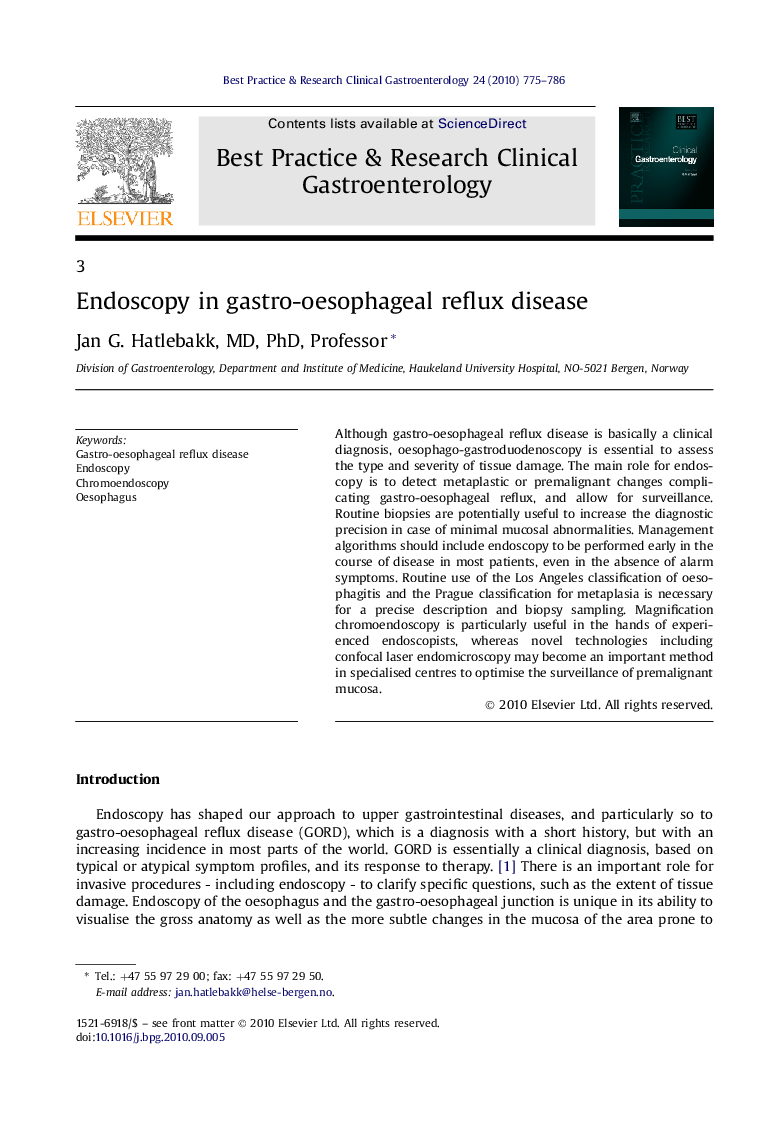| Article ID | Journal | Published Year | Pages | File Type |
|---|---|---|---|---|
| 3254373 | Best Practice & Research Clinical Gastroenterology | 2010 | 12 Pages |
Although gastro-oesophageal reflux disease is basically a clinical diagnosis, oesophago-gastroduodenoscopy is essential to assess the type and severity of tissue damage. The main role for endoscopy is to detect metaplastic or premalignant changes complicating gastro-oesophageal reflux, and allow for surveillance. Routine biopsies are potentially useful to increase the diagnostic precision in case of minimal mucosal abnormalities. Management algorithms should include endoscopy to be performed early in the course of disease in most patients, even in the absence of alarm symptoms. Routine use of the Los Angeles classification of oesophagitis and the Prague classification for metaplasia is necessary for a precise description and biopsy sampling. Magnification chromoendoscopy is particularly useful in the hands of experienced endoscopists, whereas novel technologies including confocal laser endomicroscopy may become an important method in specialised centres to optimise the surveillance of premalignant mucosa.
